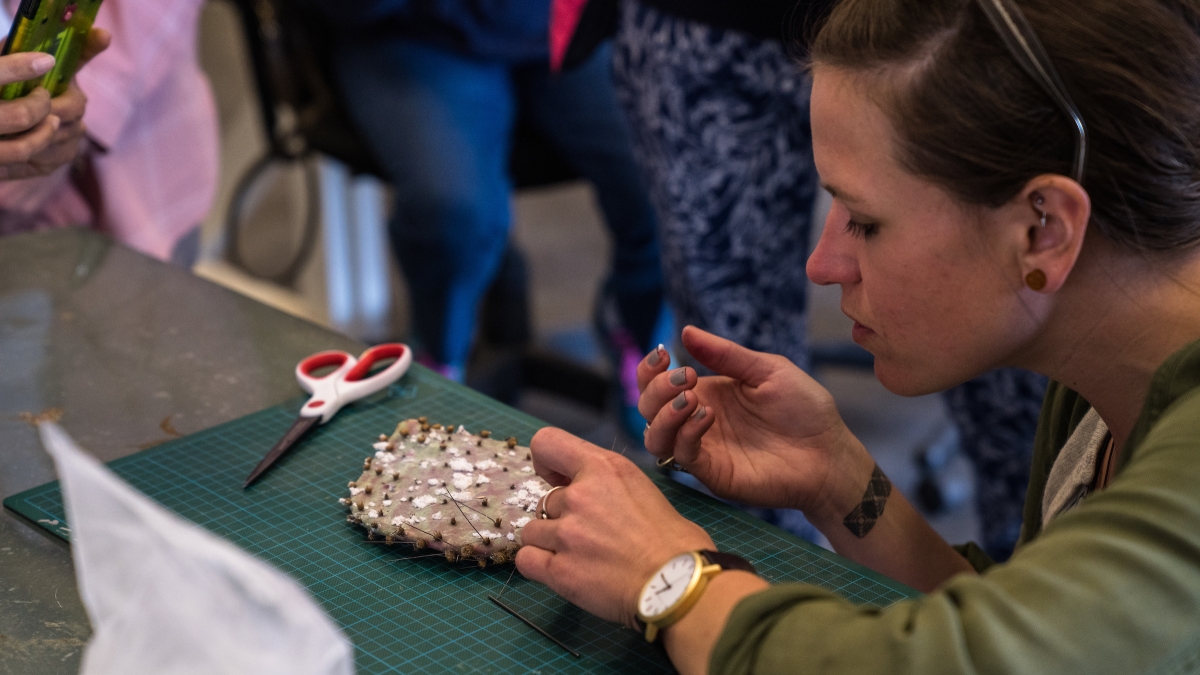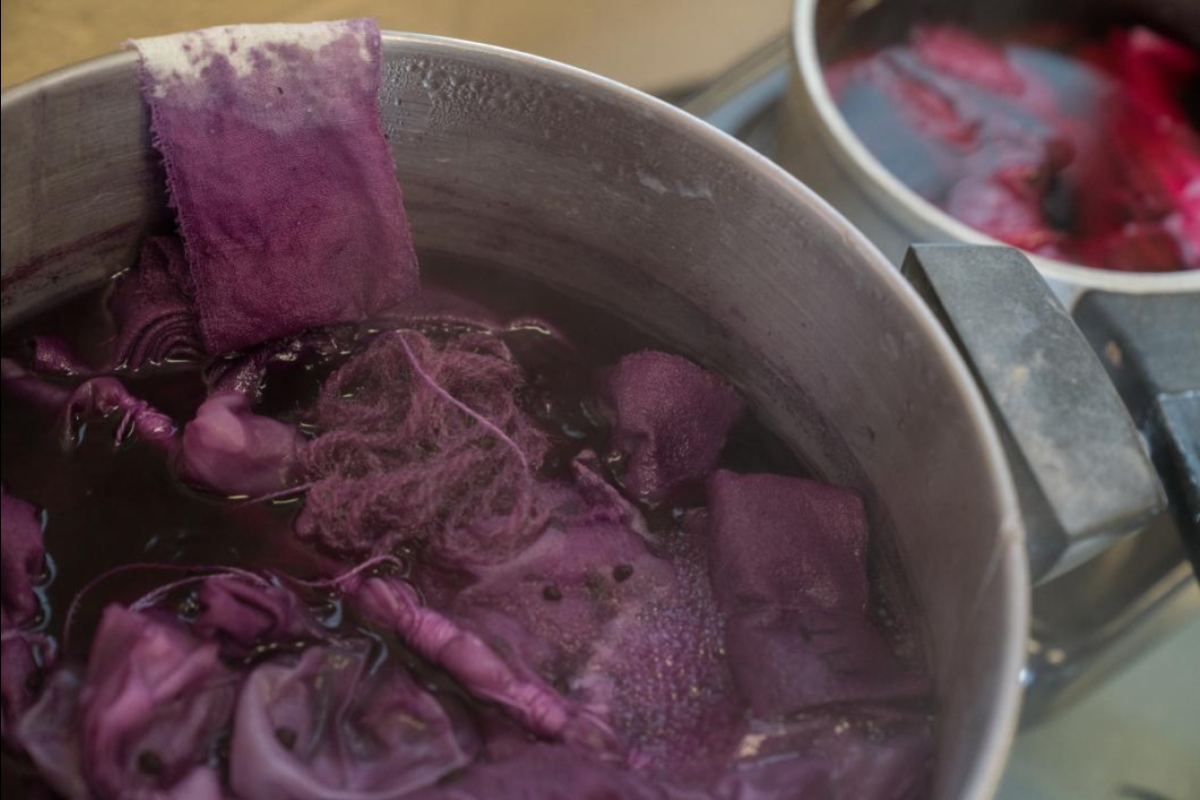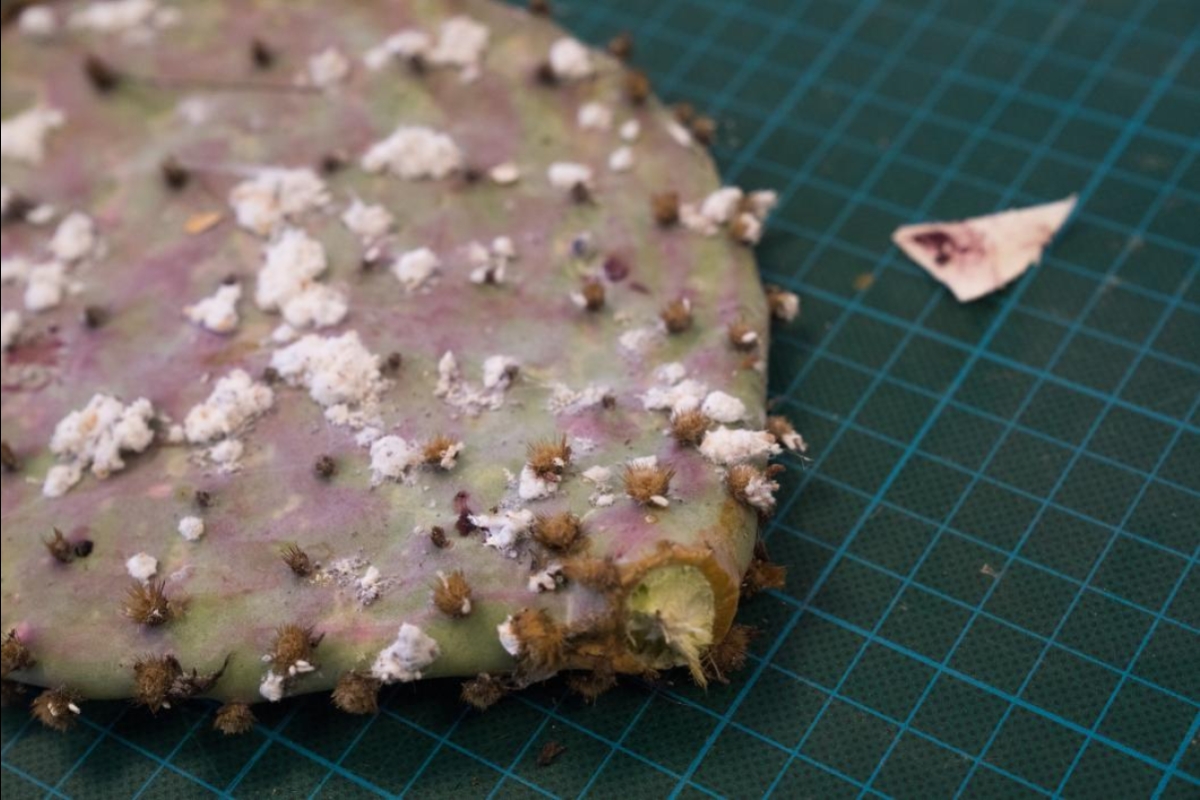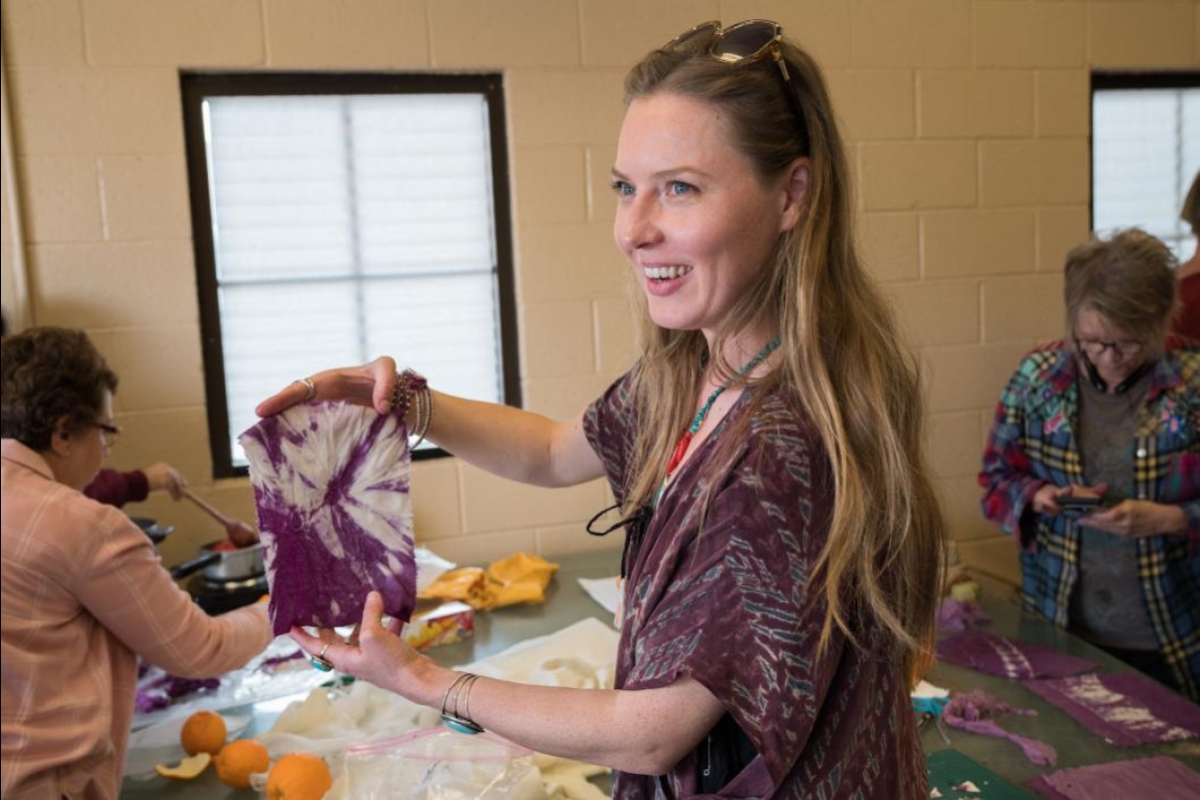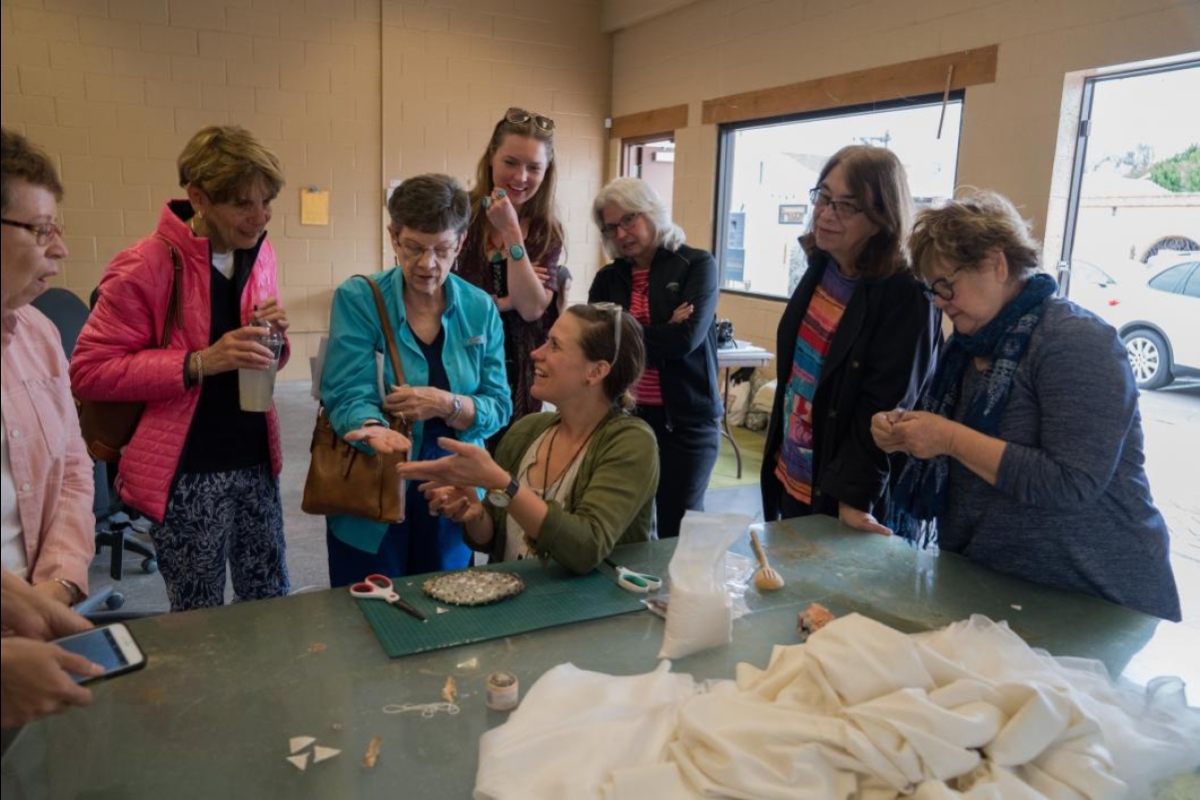Erika Lynne Hanson plucked some tiny bugs off of a prickly pear paddle and squished them, releasing a brilliant reddish-purple stain onto a fold of white silk.
The insects, called cochineal, have been used as a natural dye for centuries, dating back to the Aztecs. Hanson used them as part of a free workshop in Scottsdale earlier this week.
“We see them all over here in Phoenix, which is really fun because in the rest of the world, people order their cochineal from places like this,” said Hanson, an assistant professor of fiber arts and socially engaged practices in the Herberger Institute for Design and the Arts at Arizona State University. “This is so much better than when you order it online — it’s a connection to the land.”
Hanson is leading a series of free community arts workshops as part of her Scottsdale Creates residency for Scottsdale Public Art. The events will focus on different aspects of fiber arts, including natural dyeing, crocheting and embroidery.
Hanson has been a fiber artist for years and has created installations, sometimes incorporating video, all over the country. Her work frequently meditates on the concept of landscape.
“I’ve always dyed things, usually using chemical dyes,” she said. “But in the last eight years, since I started teaching, I’ve been doing a lot of research on natural dyes because it’s far more interesting and it’s really specific, depending on what landscape you’re in, what you can find and harvest.
“I really like it as a teaching mechanism and also as a way to get people out and walking around in their surroundings to pay attention to what’s there.”
The cochineal are a parasitic, plant-sucking insect that appear on prickly pear paddles as a waxy, white coating. The bugs, which are related to aphids, are bred on farms in Mexico, where they’re dried, ground and sold as natural dye. Cochineal is a common color additive to food and cosmetics.
At the workshop, Hanson simmered two pots of water and added the cochineal and some alum, a “mordant,” or bonding agent, that makes the dye adhere to the fibers. Natural dyes stick best to proteins, so fibers from animals, such as wool and silk, are better than cotton, linen or synthetics.
In earlier workshops, Hanson used onion skins and coffee grounds as dyes, producing shades ranging from light taupe to golden yellow. The next workshop on natural dyes will use indigo, a process that involves oxygen and fermentation, Hanson said.
As the cochineal pots simmered, someone plucked an orange off a nearby tree and Hanson squeezed the juice into one of the pots. The acid in the orange juice acted as a pH modifier, changing the color from a bright reddish purple to a brilliant coral.
The workshop participants twisted, knotted and tied their silk squares, creating vibrantly patterned kerchiefs.
Hanson is the ninth artist to have the residency since it was created in 2011. The goal is to stimulate community engagement and provide hands-on activities, according to Wendy Raisanen, curator of collections and exhibitions for Scottsdale Public Art.
“I find that these days, in the digital age, human beings need human contact. When you can learn something together with people you don’t know, you make friends because you have a shared interest,” she said.
Part of Hanson’s title is professor of socially engaged practice, which is a new field of study, she said.
“It can range into community art practices or more abstract versions where you’re thinking about implications of art in the world, or what it means to have a responsible practice,” she said.
“I like to be able to get out and talk to people about technique but also to get people to think about their surroundings in a different way.”
The next workshop will be at 1 p.m. Friday, and the indigo workshop will be March 25. For a complete listing of events, which run through May, click here.
Top photo: Erika Lynne Hanson, an assistant professor of fiber arts at ASU, plucks a cochineal bug off a prickly pear paddle at a free workshop on natural dye that she led in Scottsdale earlier this week. Photo by Marcus Chormicle/ASU Now
More Environment and sustainability

ASU prof turns trash into treasure
The Research Corporation for Science Advancement, or RCSA, regularly hosts a series of discussions known as Scialog, a portmanteau of science and dialogue. Created in 2010, the Scialog format…

Best outdoor experiences are shared and build connections, recreation professor says
Steve Sassaman doesn’t really need to tell you he’s an outdoorsman. One look at his full, dark beard gives a vibe that clearly says he knows which end of the kayak to put into the water first.While…

ASU offers new project-based courses for global leaders of tomorrow
Addressing complex challenges requires innovative solutions.This is why the College of Global Futures — with its four academic units including the School for the Future of Innovation in Society, the…
